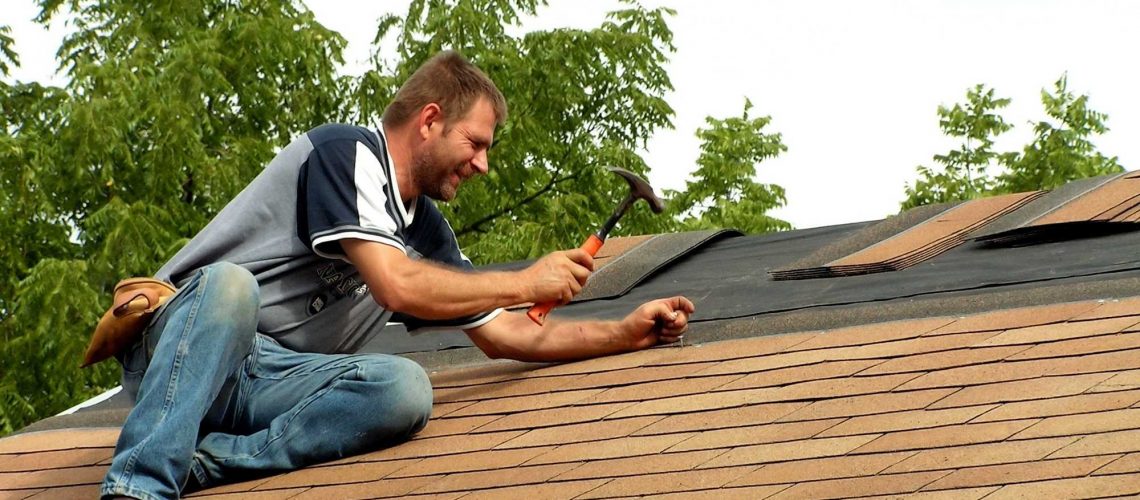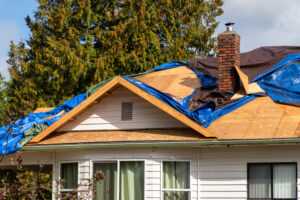People often think of roofs as structures that last forever. They’re sturdy and resilient, allowing many people to overestimate their lifespans.
However, the average asphalt shingle roof has a lifespan of 25 years. Commercial roofs vary, but few last longer than 50 years.
As a business owner, you become responsible for replacing your roof when the time comes. However, to do so, you’ll need to know about the best roofing materials.
There are several types of roofs for commercial buildings. Each of these commercial roofing options has various pros and cons.
We’ll discuss some of these materials in this guide. Continue reading to find the best options on the market!
EPDM Business Roofing
EPDM stands for ethylene propylene diene monomer. Understandably, most people prefer to call it “rubber roofing.”
This material has a rubbery consistency that makes it both sturdy and flexible. This texture gives it several advantages.
First, rubber roofing is very lightweight when compared to other roofing materials. You don’t have to pay for reinforcing to ensure the roof remains secure.
Another advantage is that these roofs have average life expectancies of roughly 20 years. This span puts them on par with common home roof materials, such as asphalt shingles.
EPDM roofs are also resistant to scruffs and scratches. It usually has a black color, too, which makes it capable of absorbing UV rays without damage. Finally, these roofing materials are among the most affordable options for roofing materials.
However, there are a few drawbacks to rubber roofing. First, it’s not the most attractive option. Other materials are much more aesthetically pleasing.
Secondly, black rubber roofs absorb UV rays, taking a toll on your HVAC unit. You can choose lighter colored rubber roofs, but these are more expensive.
Finally, these roofs can become punctured by things like hail. When they become punctured, water can infiltrate and quickly cause problems for your building.
TPO Roof Installation
This acronym stands for “thermoplastic polyolefin.” It’s increasingly become a popular choice for commercial building owners.
Like EPDM options, TPO is an affordable roofing choice. In many cases, it’s cheaper than EPDM.
This material, too, is a lightweight solution. You can install it in several ways, such as fastening it directly to the roof deck. Finally, it resists corrosion and weathering, as well as mildew.
You don’t have to pressure wash these roofs to clean them, either. Finally, TPO melts its plastic membrane together to create a more dependable bond between seams.
TPO also has an advantage over EPDM because of its white coloring. These white shades reflect UV rays away from the building, protecting your building from higher energy bills.
This product may seem like the perfect roofing material. However, it has many surprising drawbacks.
First, this product comes in a variety of qualities. It’s easy to get low-quality TPO if you’re not careful.
Another issue is that TPO roofing’s top layer has laminated protection. However, this lamination can cause weak points in the roof, such as:
- shrinking
- cracking
- crazing
- deterioration
Finally, TPO is not a fire-resistant product. This roof isn’t likely to survive if your building catches fire.
PVC Commercial Roofing
PVC stands for “polyvinyl chloride.” This roofing type consists of two layers of PVC roof material with polyester reinforcing between the layers. These layers include additives that make your material flexible and UV-protected.
PVC is also a lightweight solution, much like EPDM and TPO. It has a relatively long lifespan when used for flat and low-slope roofs. PVC can also resist the following:
- moisture
- fire
- wind
- chemicals
But, like other roofing materials, PVC has some downsides. The biggest issue is that it often shrinks over time.
This occurrence pulls the seams together and lifts the corners, which causes leaks. Colder weather can also cause old PVC roofs to shatter or puncture.
You may think you can repair these issues, but that leads to the next problem. PVC roofing is often difficult to repair. The welding methods used to create it rarely treat old roofs well.
Finally, PVC roofing is more expensive than the previous two options. However, it’s more fire-resistant than TPO and more generally durable than EPDM.
Acrylic Roof Coatings
Roofers can apply acrylic roof coatings to several types of roofs. Many prefer to use these in lieu of a standard roof replacement.
Acrylic coatings have several advantages, such as being seamless and water-tight. It’s also a more renewable option than any we’ve discussed.
Acrylic roof coatings also resist UV rays and reflect them away from the building. This feature makes them a more energy-efficient choice. All you need to repair these structures is some caulk.
The primary con associated with this material is weather concerns. You can only apply these coatings at temperatures of 50 degrees or more. They also perform poorly on roofs that often receive pond buildup.
Asphalt Roofing
Finally, there’s asphalt roofing. This roofing material is one of the easiest to install, especially on low-slope roofs. It’s also more inexpensive than many of these other materials.
However, asphalt roofing can have varying lifespans. Shingled roofs may last for a few decades, while rolled roofing may last ten years. Asphalt is also a less energy-efficient material.
Find the Best Roofing Materials Today
As you can see, several products compete for the title of “best roofing materials.” Each of these products can provide some benefit to your building. The next step is finding a contractor who can replace or repair your roof with these materials.
If you live in the Champaign, Louisiana, area, consider calling us! We offer top-grade roofing replacements for valuable rates.
Our roofing work also comes with a 50-year warranty. Contact us today to receive an estimate!




